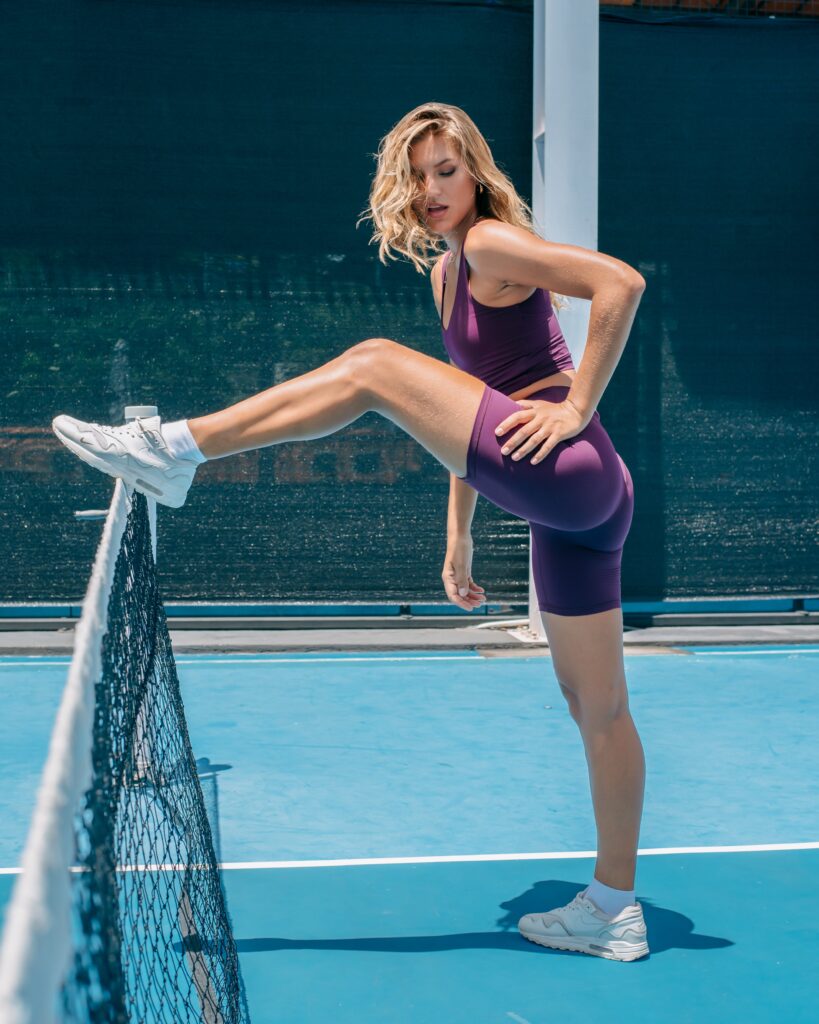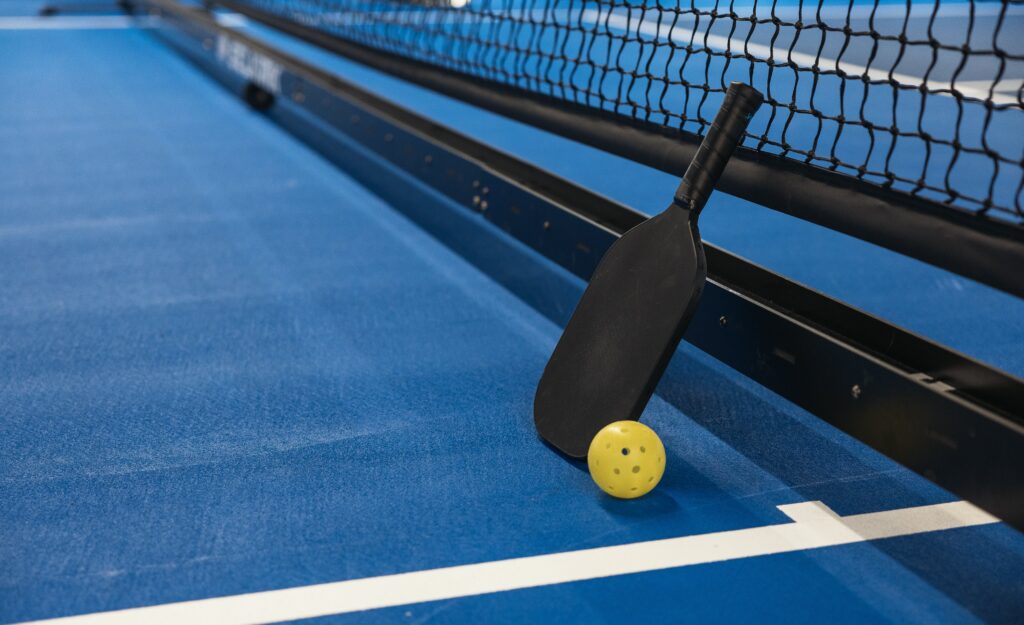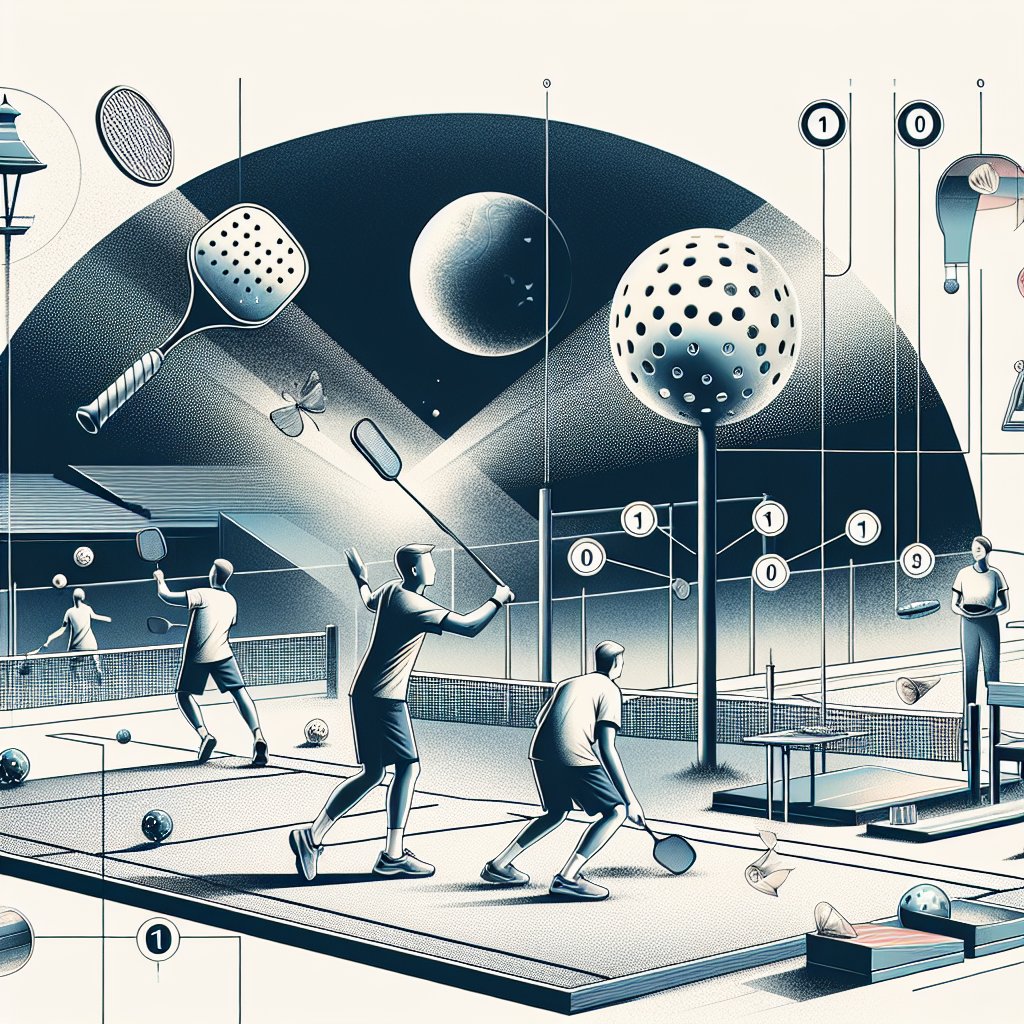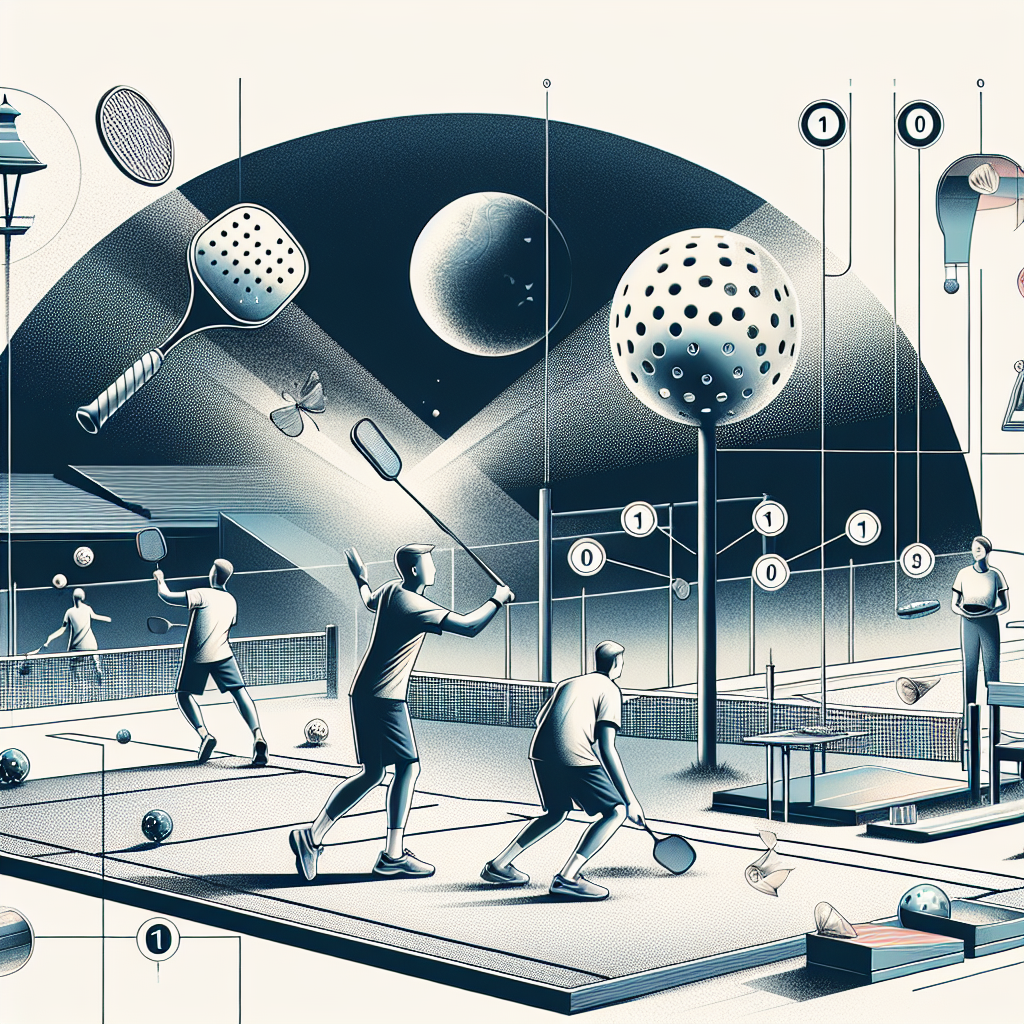Whether you’re a seasoned pickleball player or just starting out, it’s important to be well-versed in the rules of the game. From understanding the official court dimensions to knowing how to handle a fault, this article will guide you through the ten fundamental pickleball rules. Whether you’re serving up an ace or strategizing your way to victory, these rules will ensure a fair and enjoyable game for all. So grab your paddle, gather your friends, and let’s dive into the exciting world of pickleball!
Rule 1: Court and Equipment
Court Size
When playing pickleball, it is important to have a designated court that adheres to the standard size. A pickleball court is 20 feet wide and 44 feet long for doubles play, while for singles play, the court is reduced to 20 feet wide and 22 feet long. Having the correct court size ensures a fair and consistent playing experience for all players.
Net Height
The height of the net is another crucial aspect of pickleball. The net should be positioned at a height of 36 inches at the sidelines and 34 inches at the center. This slight variation in height ensures that the ball is still accessible to all players, regardless of where they are positioned on the court. The appropriate net height allows for exciting volleys and strategic shots during the game.
Paddle
Pickleball paddles are an essential piece of equipment for this fun and fast-paced sport. The paddles are typically made of lightweight materials such as wood, composite, or graphite. They have a solid face with small holes that reduce air resistance and provide better control over the ball. The size and weight of the paddle must meet the standards outlined by the official pickleball rules.
Ball
The type of ball used in pickleball can greatly affect the gameplay. Official pickleball balls have distinctive hole patterns that help with visibility and ball control. The balls are specifically designed to be light and durable, allowing for consistent play over extended periods. It is important to ensure that the ball complies with official regulations to maintain a fair and enjoyable game for everyone.
Rule 2: Serving
Order of Serve
In pickleball, the order of serve is determined at the beginning of a match through a coin toss or a simple rally to decide who serves first. The winning team or player gets to choose whether they want to serve or receive the serve. Once the order is established, it remains consistent throughout the match, with each player or team taking turns serving.
Positioning
During the serve, the serving team must stand behind the baseline, which is a few feet away from the back edge of the court. The receiver and their partner must maintain a position within the service box. Proper positioning ensures that both teams have a fair opportunity to return the serve and engage in an exciting rally.
Continuous Serving
Unlike some sports where serving alternates between teams, pickleball allows the serving team to continue serving until they commit a fault. This rule encourages longer rallies and provides an opportunity for teams to gain momentum by scoring consecutive points. Continuous serving adds an element of excitement to the game and rewards skilled servers.
Faults on Serve
To ensure fair play, certain faults during the serve can result in the loss of a point or the opportunity to serve. Common serve faults include stepping on or into the non-volley zone, failing to serve diagonally, and hitting the ball out of bounds. Understanding and adhering to the rules regarding serve faults is crucial for maintaining a fair and enjoyable match.

Rule 3: Double Bounce Rule
Definition
The double bounce rule is a unique feature of pickleball that adds an additional strategic element to the game. According to this rule, when the ball is served, the receiving team must let it bounce once on their side before returning. The serving team must also let the ball bounce once on their side after their serve. This rule ensures longer rallies and allows players to showcase their agility and shot-making skills.
Exceptions
While the double bounce rule is a fundamental aspect of pickleball, there are a few exceptions to keep in mind. If the ball is volleyed in the non-volley zone, commonly known as the kitchen, the double bounce rule no longer applies. Players may hit the ball in the air without letting it bounce as long as they are positioned outside the non-volley zone. Understanding these exceptions is essential for correctly interpreting the rules during fast-paced gameplay.
Rule 4: Faults
Non-Volley Zone
The non-volley zone, also referred to as the kitchen, is a designated area on the court where players are not allowed to hit the ball out of the air. This zone extends seven feet from the net on either side, creating a challenging but strategic area for both teams. It is important to follow this rule to avoid committing a fault and losing a point.
Stepping into Non-Volley Zone
To maintain the integrity of the game, players must exercise caution when near the non-volley zone. Stepping into or touching the non-volley zone while volleying the ball results in a fault. This rule prevents players from gaining an unfair advantage by positioning themselves too close to the net. Being mindful of your foot placement and staying clear of the non-volley zone is crucial for avoiding faults and playing a fair game.
Volleying the Ball
Volleying, or hitting the ball out of the air, is a skill that can significantly impact the outcome of a pickleball match. However, there are certain restrictions on when volleying is allowed. Volleying is prohibited if the player is positioned within the non-volley zone. Additionally, during the double bounce portion of the game, volleying is not permitted, and players must let the ball bounce before making their shot. Complying with these rules ensures fair and exciting gameplay.
Double-Hit
While it is natural to want to make the most of an opportunity, certain actions on the court may result in a double-hit fault. A double-hit occurs when a player hits the ball with both the paddle face and the edge of the paddle in quick succession. This rule prevents players from gaining an unfair advantage and promotes clean and skillful shots during the game.
Out of Bounds
To ensure fair gameplay, players must be aware of the boundaries of the court and avoid hitting the ball out of bounds. If the ball lands beyond the designated lines on the court, it is considered out of bounds, resulting in a fault. Staying within the court boundaries and taking accurate shots are essential for maintaining fair play and preventing unnecessary faults.

Rule 5: Scoring
Winning Score
In pickleball, the game is typically played to 11 points, but may also be played to 15 or 21 points depending on player preference. However, the winning team must have a lead of at least two points. This rule ensures that the winning team has a definitive advantage over the opposing team and adds excitement as the match draws to a close.
Determining Serving Team
At the beginning of the game, the serving team is determined as explained in Rule 2: Order of Serve. However, after each point is scored, the serving team switches sides, and the server rotates to the opposite side of the court. This rotation ensures equal opportunities for both teams and prevents any advantage of serving from one side of the court.
Switching Sides
Pickleball incorporates the element of switching sides during a game to offset any potential advantages that the court setup might give to one team. After the first game, the teams switch sides, allowing each team to experience and adapt to the different playing conditions. Switching sides helps maintain fairness and adaptability, ensuring that the outcome of the match is determined by skill.
Rule 6: Doubles Play
Serving Order
In doubles play, serving order is governed by the same rules as in singles play. The team or player who wins the initial coin toss or rally gets to choose whether they want to serve or receive the serve. The serving team will then decide which player serves first, and the serving order remains the same throughout the match, with each player taking turns serving.
Positioning
Proper positioning is crucial in doubles play to optimize court coverage and facilitate efficient team coordination. Each player should communicate and move strategically to cover their designated part of the court. Maintaining proper positioning enables teams to defend effectively, anticipate shots, and collaborate seamlessly during rallies. It is important to establish a strong partnership and work together to outplay the opposition.
Communication
Communication is essential in doubles play, as it allows teammates to coordinate their movements, share information, and make split-second decisions on the court. Effective communication can help avoid collisions, confusion, and missed opportunities. Verbal cues, signals, and non-verbal gestures are all valuable tools for maintaining a strong connection with your partner and enhancing your chances of winning the game.

Rule 7: Let Call
Definition
Sometimes, unforeseen circumstances or distractions may affect the flow of the game. In such cases, players have the option to call a “let.” A let is a replay of the point where the original point is considered null and void. Often, lets are called when the ball hits the net during a serve, hindering its proper trajectory. This rule ensures fairness and allows players to regroup in situations where external factors interfere with the standard gameplay.
When to Call a Let
A let can be called when both players or teams mutually agree that external interference has affected the outcome of the point. The decision to call a let should be made promptly and honestly to maintain the integrity of the game. It is important to remember that calling a let should only be done when there is a legitimate reason, keeping in mind the overall spirit of sportsmanship and fair play.
Rule 8: Timeouts
Usage
In pickleball, timeouts provide an opportunity for teams to regroup, strategize, and regain focus during critical moments of a match. Each team is allowed one timeout per game, lasting for a specified duration, as outlined in the next section. Calling a timeout can help players reset their mindset, discuss tactics, and address any issues that may be affecting their performance. Proper utilization of timeouts can have a significant impact on the outcome of a game.
Duration
A timeout in pickleball lasts for one minute. During this time, players can confer with their coach, discuss strategies with their partner, or simply take a moment to collect their thoughts and regain composure. It is important to use this time effectively, as it is limited in duration. Utilizing timeouts strategically and making the most of the allotted minute can greatly enhance a team’s chances of success.

Rule 9: Change of Ends
When to Change Ends
During a game, players change ends after the completion of the first game and then again every subsequent odd-numbered game. This rule helps balance any discrepancies caused by factors such as wind, lighting conditions, or the court surface. Changing ends allows players to experience and adapt to the varying conditions and ensures fair play. Adapting to different ends of the court becomes an integral part of the game, offering a new challenge for players to overcome.
Rule 10: Etiquette
Sportsmanship
Pickleball is not just about the rules and the competition; it also emphasizes the importance of sportsmanship. Players should always strive to maintain a friendly and respectful attitude towards their opponents. Shake hands before and after a match, congratulate each other on good shots, and express gratitude for a well-played game. Demonstrating good sportsmanship not only contributes to a positive playing environment but also enhances the overall enjoyment of the game.
Line Calls
Accurate line calls are an essential part of fair play in pickleball. When a ball lands close to the lines, it is the responsibility of the player to make the correct call. Honesty and integrity should always prevail, even if a misjudgment could potentially impact the outcome of a point. It is crucial to make line calls to the best of your ability and respect the decisions made by your opponents.
Referee
Pickleball is often played without a dedicated referee, relying on players to accurately judge the game. In the absence of a referee, players must self-officiate and act with integrity when making calls. Players are encouraged to resolve any disputes calmly and discuss any questionable calls with fairness and respect. Prioritizing the spirit of the game and respecting the decisions made by all players will contribute to a successful and enjoyable pickleball experience.
In conclusion, understanding and following the rules of pickleball is essential for fair and enjoyable gameplay. From court size and equipment to scoring and etiquette, each rule plays a crucial role in maintaining balance, promoting skill development, and enhancing the overall experience for players. Whether you’re a beginner or a seasoned pickleball enthusiast, adhering to these rules will help you make the most of your time on the court and ensure that every game is a meaningful and exciting one. So grab your paddle, gather your friends, and get ready to have a blast playing this fantastic sport!


